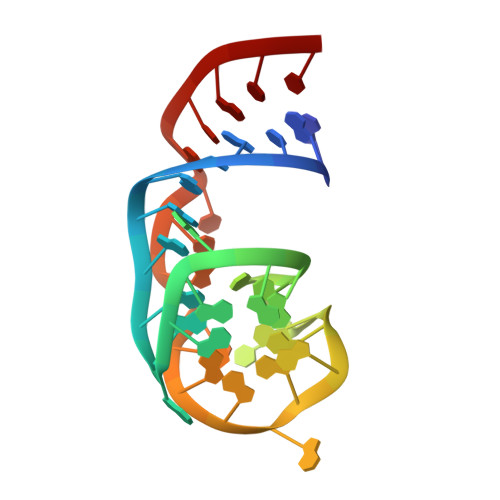Binding between G Quadruplexes at the Homodimer Interface of the Corn RNA Aptamer Strongly Activates Thioflavin T Fluorescence.
Sjekloca, L., Ferre-D'Amare, A.R.(2019) Cell Chem Biol 26: 1159
- PubMed: 31178406
- DOI: https://doi.org/10.1016/j.chembiol.2019.04.012
- Primary Citation of Related Structures:
6E80, 6E81, 6E82, 6E84 - PubMed Abstract:
Thioflavin T (ThT) is widely used for the detection of amyloids. Many unrelated DNAs and RNAs that contain G-quadruplex motifs also bind ThT and strongly activate its fluorescence. To elucidate the structural basis of ThT binding to G quadruplexes and its fluorescence turn-on, we determined its co-crystal structure with the homodimeric RNA Corn, which contains two G quadruplexes. We found that two ThT molecules bind in the dimer interface, constrained by a G quartet from each protomer into a maximally fluorescent planar conformation. The unliganded Corn homodimer crystal structure reveals a collapsed fluorophore-binding site. In solution, Corn must fluctuate between this and an open, binding-competent conformation. A co-crystal structure with another benzothiazole derivate, thiazole orange (TO), also shows binding at the Corn homodimer interface. As the bound ThT and TO make no interactions with the RNA backbone, their Corn co-crystal structures likely explain their fluorescence activation upon sequence-independent DNA and RNA G-quadruplex binding.
Organizational Affiliation:
Biochemistry and Biophysics Center, National Heart, Lung and Blood Institute, 50 South Drive MSC 8012, Bethesda, MD 20892-8012, USA.
















